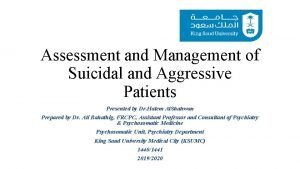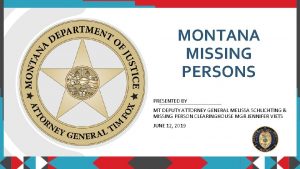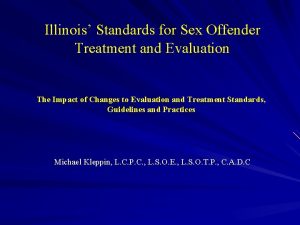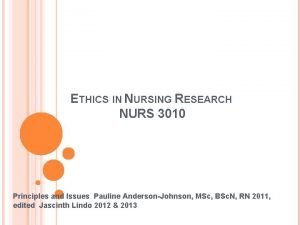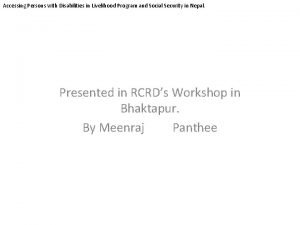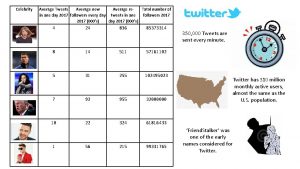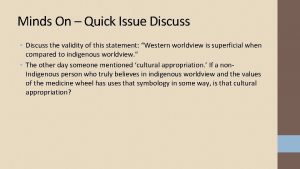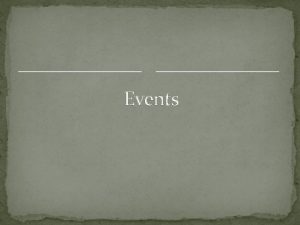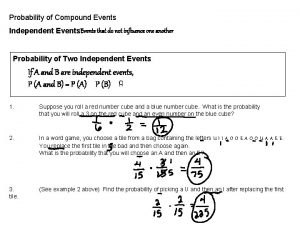Small minds discuss persons Average minds discuss events

















- Slides: 17

“Small minds discuss persons. Average minds discuss events. Great minds discuss ideas. ” NT 101 C-03: A Survey of the New Testament Chapter 20 Ephesians, Philippians, Colossians and Philemon: Letters from Prison

14 – The Prison Letters of Paul Ø Paul’s Prison Letters: The writings of Paul to the Ephesians, Philippians, Colossians and Philemon are included in the canonical epistles which the apostle to the Gentiles composed in jail. They were written in early 60’s, ca. A. D. 61/62. • Paul was imprisoned in Caesarea (Acts 23: 23 -26: 32), Rome (Acts 28: 30 -31) and possibly Ephesus (2 Cor 11: 23; cf. Acts 16: 19 -40 in Philippian prison). Roman Jail: The Prison Epistles probably were written in Rome during Paul’s first imprisonment (conventional view by majority of scholars)

Philemon: Plea for a Runaway Slave 14 – The Prison Letters of Paul **Paul asks Philemon, a Christian in Colossae, to accept back his runaway slave Onesimus as a brother. Paul hints to loan the slave to him as an apostle to help in missions work! And so, Paul wrote Philemon in ca. A. D. 61/62. Addressee: Philemon (Paul’s friend and convert) Content of Philemon: Opening: Salutation, Greeting & Blessing (vv. 1 -3) I. Thanksgiving for Philemon (vv. 4 -7) II. Appeal for Onesimus (vv. 8 -22) Closing: Final Greetings & Benediction (vv. 23 -25)

14 – The Prison Letters of Paul “The epistle’s chief value is not that it is a tract about slavery, for it is not that. It is a letter which, at one level ‘about’ koinōnia, Christian fellowship and mutual participation, is at a far deeper level an outworking, in practice, of that principle. That which it expounds, it also exemplifies. It is a living fragment of the life of Christ, working itself out in the lives of human beings so different from us and yet so similar. Perhaps the only hermeneutical principle we need here is the crisp command, issued in another context where custom and faith were in collision: go, and do thou likewise. ” --N. T. Wright

14 – The Prison Letters of Paul Theme of Colossians: “Lordship of Christ” “Christ as the Head of the Church” (R. H. Gundry) Introductory Issue: Critical scholarship labels Colossians as Pseudo-Pauline Epistle together with Ephesians and 2 Thessalonians • Ephesian Origin of Colossians? • Caesarean Origin of Colossians? • Roman Origin of Colossians? Occasion: Epaphras, a convert of Paul, preached in the Colossae, Laodicea and Hierapolis area. He visited Paul in prison and thus resulted of the writing of letter in early 60’s, ca. A. D. 61/62.

14 – The Prison Letters of Paul ü Paul sent a letter to the Colossians with Epaphras, founder of the church, who had visited Paul regarding a spreading heresy. ü The Colossian heresy diminished Christ, emphasized human philosophy and contained elements of Judaism. Note: Col 2: 8 (cf. v. 9) ü Paul uses “mystery” language for theological truth hidden from unbelievers but revealed clearly to the believers in Christ. ü The Colossian epistle highlights the preeminence of Christ as the head of the church in Christian doctrine (chaps 1 -2) and behavior (chaps 3 -4).

14 – The Prison Letters of Paul v The names of authors as Paul and Timothy (Col 1: 1) may reflect the principle of two witnesses for truth because Paul did not really know the Colossians by personal contact (Col 1: 4; 2: 1, 5). v The prayer request of Paul: “Remember my bonds” (4: 18) places this as a prison letter. v This letter to the Colossians, 100 miles east of Ephesus, in Asia Minor is also concerned with the neighboring Laodicea (Col 2: 1; 4: 13, 16). v It is most likely that the churches who were the addressees of this epistle were composed mostly if not totally of Gentiles (1: 27; 2: 13). v Paul had an amanuensis but his greetings and signature were with his own hand (Col. 4: 18).

14 – The Prison Letters of Paul Key verse/thematic statement: “As therefore you received Christ Jesus the Lord, so live in him, rooted and built up in him and established in the faith, just as you were taught, abounding in thanksgiving. ” (Col 2: 6 -7 RSV) Cf. Col 1: 18 “supremacy in all things” Content of Colossians: *Opening with Greeting, Thanksgiving, Prayer (1: 1 -12) I. Lordship of Christ in Creed (doctrinal: 1: 13 -2: 23) II. Lordship of Christ in Conduct (practical: 3: 1 -4: 6) *Closing with Greetings, Advices, Farewell, Benediction, Signature (4: 7 -18)

14 – The Prison Letters of Paul Theme of Ephesians: “The Church as the Fullness of the Body of Christ” (R. H. Gundry’s suggested theme of Ephesians as “The Body as the Body of Christ”) Introductory Issues: Ø Ephesians is Pseudo-Pauline letter together with Colossians and 2 Thessalonians. Ø What was written first, Ephesians or Colossians? Or, were these two letters written at the same time? Ø Is Tychicus, the amanuensis and/or the letter carrier, the missing link? Ø Was Ephesians a circular letter, not to Ephesus but rather written from Ephesus?

14 – The Prison Letters of Paul • This letter was probably a circular letter sent to Ephesus as the first destination among the churches in Asia Minor rather than from Ephesus as suggested by some scholars. • Ephesians was carried, along with Colossians and Philemon by Tychicus as the courier. • Paul discusses the benefits of the church as Christ’s body (chaps 1 -3) and the church’s responsibilities (chaps 4 -6). • The occasion is directly related to the Colossians while Paul was still in jail and thus written in early 60’s, ca. A. D. 61/62 with the same date as that of Philemon and Colossians.

14 – The Prison Letters of Paul Author of Ephesians: Apostle Paul Origin: Prison in Rome Date: Toward the End of Paul's life, early 60’s, ca. A. D. 61/62. Genre: Circular Letter for Several Congregations Occasion: Paul was writing to the Colossians and Philemon. Tychicus was passing Asia Minor, via Ephesus, on his way to Colossae. When Tychicus was ready to go Paul also finished an epistle to the churches in Asia Minor in which Ephesus was prominent and became the first recipient of the epistle known to be the Epistle to the Ephesians.

14 – The Prison Letters of Paul Content of Ephesians: I. Privilege of the Church in Christ (chaps 1 -3) A. Personal Salutation (1: 1 -2) B. Praise and Prayer to the Triune God of Blessings (1: 3 -23) C. Provisions and Possibilities for the Holy Church (2: 1 -22) D. Petitioners and Partakers of God's Blessings (3: 1 -21) II. Pathway of the Church in Christ (chaps 4 -6) A. Prayer and Practice Toward Oneness in Christ (4: 1 -16) B. Purpose and Potency of Life in Christ (4: 17 -6: 9) C. Prevailing Against the Enemy (6: 10 -20)

14 – The Prison Letters of Paul Leitmotif in Philippians: “JOY” (Joyful Life) *chara (noun = 5 times) – Phil 1: 4, 25; 2: 2, 29; 4: 1 joy (more than mood or feeling or emotion) *chairō (verb = used 9 times) – Phil 1: 18 2 X; 2: 17, 18, 28; 3: 1; 4: 4 2 X, 10 to rejoice, be joyful, be glad (understanding of existence—a worldview!) *sunchairō (compound verb = 2 times) – Phil 2: 17, 18 to rejoice with, be joyful with, be glad with Ø The experience of “joy” is the underlying leitmotif that flows throughout the epistle from start to end. Joy cannot be missed by any reader of Paul’s letter to the Philippians. Ø Joy in Hardship – the apostle Paul was in jail!

14 – The Prison Letters of Paul Obedience and Ministry of Paul Among the Philippians • Following the vision from the Lord the apostle went to Macedonia to preach the gospel • First act on European soil, when in the late 40 s or early 50 s CE Paul arrived in Macedonia from Asia on his second missionary journey • Maltreatment in Philippi and imprisonment • Gentile converts became the Church nucleus • Supporting Church to Paul’s ministry • In faithful communication with the apostle • Paul visited the Philippians for the last time in ca. 55 or 56 CE

14 – The Prison Letters of Paul Occasion and Purpose of the Epistle • The Church in Philippi received the news that the apostle was put to jail. (cf. Phil 1: 12 -14) • Epaphroditus traveled from Philippi to bring a gift to Paul in prison. (Phil 4: 18) • News reached Philippi of Epaphroditus’ illness. (Phil 2: 26) • Anxiety of the Philippians because of the report that their messenger was terribly sick reached Epaphroditus. (Phil 2: 26) • Epaphroditus was about to set out for Philippi, carrying Paul's letter. (Phil 2: 25, 28) • Timothy was to follow him shortly, as soon as Paul's prospects became clearer. (Phil 2: 19 -23) • Paul himself hoped to visit Philippi, in the event of his release. (Phil 2: 24)

14 – The Prison Letters of Paul ü Roman jail as the traditional view during early 60’s, ca. A. D. 61/62 ü Late dating in the life of the apostle Paul 1. Praetorian guard (Phil 1: 13; cf. Acts 28: 16) 2. Caesar's household (Phil 4: 22) 3. Paul's situation (Phil 1: 14 ff) 4. External evidence (testimony of the Church Fathers) v Strongest objection is the stretch between Rome and Philippi which is difficult to fit the trips of people mentioned by Paul!

14 – The Prison Letters of Paul ü the fullness of joy in all life's circumstances (e. g. , Phil 1: 4, 12; 2: 17 -18; 4: 4, 11 -13) ü the Christian virtue of humility and service (i. e. , Phil 2: 1 -18) ü the surpassing value of knowing Christ (Phil 3) Main Theme: “PARTNERSHIP IN THE GOSPEL” (1: 5 --gospel partnership = 1: 6 --good work) Content Outline of Philippians: Opening (1: 1 -11) I. Report of the Affairs (1: 12 -26) II. Devotion of the Believers (1: 27 -2: 30) III. Polemics of the Faith (3: 1 -4: 1) IV. Concerns of the Apostle (4: 2 -20) Closing (4: 21 -23)
 One persons trash is another persons treasure
One persons trash is another persons treasure Motion in a straight line
Motion in a straight line Mutually exclusive events vs not mutually exclusive events
Mutually exclusive events vs not mutually exclusive events Amateurs talk tactics professionals talk logistics
Amateurs talk tactics professionals talk logistics Msme as a seedbed of entrepreneurship
Msme as a seedbed of entrepreneurship Sad persons scale
Sad persons scale Suprailiac
Suprailiac Montana missing persons
Montana missing persons Persons
Persons Persons essential being
Persons essential being Licensed sex offender treatment provider illinois
Licensed sex offender treatment provider illinois The principle of respect for persons
The principle of respect for persons Orgasm disorder
Orgasm disorder The vulnerable persons living with a mental disability act
The vulnerable persons living with a mental disability act Livelihood opportunities for persons with disabilities
Livelihood opportunities for persons with disabilities Tidslig synsvinkel
Tidslig synsvinkel Structure of twelfth night
Structure of twelfth night Livelihood programs for persons with disabilities
Livelihood programs for persons with disabilities





